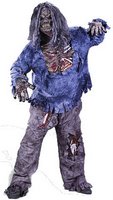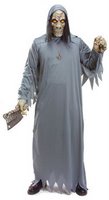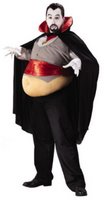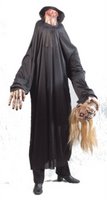crazy shoes
Platform shoes

So the '30s had passed and toward the end of the 1960s, something re-emerged: those thick chunky platform shoes. This time round, however, the shoes took on a new dash of flavor. By 1975, platforms were so common and fashionable that, to be "hip," at least 2 inch soles and 5 inch heels w ere required.1 It was during these years that experimentation with fash
ere required.1 It was during these years that experimentation with fash ion, not only drugs and sex, broke all kinds of rules of the pretentious 50s. Men, as well as women, adorned platforms. Pop art emulated the platform shoe, and by 1971, it was considered the most exciting year in shoe design, not only for the population but for Pop artists. The colors and designs were raved as "psychedelic," for their swirls and colors.2 It was during the 1970s that the platform shoe experienced it's most playful and colorful look.
ion, not only drugs and sex, broke all kinds of rules of the pretentious 50s. Men, as well as women, adorned platforms. Pop art emulated the platform shoe, and by 1971, it was considered the most exciting year in shoe design, not only for the population but for Pop artists. The colors and designs were raved as "psychedelic," for their swirls and colors.2 It was during the 1970s that the platform shoe experienced it's most playful and colorful look.
American platforms, 1970s

The 70 s, as depicted in classic movies like Saturday Night Fever, was disco filled,
s, as depicted in classic movies like Saturday Night Fever, was disco filled,  drug warped and sleazy. I'm refraining from judging those aspects of the '70s, but if you take a standard person off the street and ask for his/her images of the '70s, most likely, one of the answers is platform shoes.Platforms were in discos, at work, in supermarkets, just everywhere. Originality was sought in decorating feet: suede; fruits; flowers; silver; rainbows; bright colors; clashing colors; stars; glitter; hand painted stars and moons on wooden shoes; shoes large enough goldfish could be kept in a detachable, clear sole; thigh high, lace up boots; KISS's monstrous performance shoes; and on and on.
drug warped and sleazy. I'm refraining from judging those aspects of the '70s, but if you take a standard person off the street and ask for his/her images of the '70s, most likely, one of the answers is platform shoes.Platforms were in discos, at work, in supermarkets, just everywhere. Originality was sought in decorating feet: suede; fruits; flowers; silver; rainbows; bright colors; clashing colors; stars; glitter; hand painted stars and moons on wooden shoes; shoes large enough goldfish could be kept in a detachable, clear sole; thigh high, lace up boots; KISS's monstrous performance shoes; and on and on.
Medical Concerns
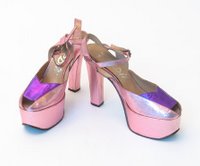
So what if these monumental 6 inch shoes were impractical and uncomfortable to walk in--they were fun! But fun could have consequences: "Yet at the outset of the decade platform shoes and boots (already daringly high) had risen to alarming levels, provoking fears from the medical profession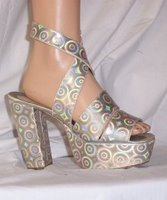 that the spines of the fashionable would be irrevocably damaged" 4. "With platforms, your brain loses feedback from the foot, which is not touching the ground in a normal fashion. You lose touch with your sense of balance."--another medical outlook on platform shoes, as noted by Dr. Vandergren, M.D., an orthopedic surgeon at Shands Hospital.
that the spines of the fashionable would be irrevocably damaged" 4. "With platforms, your brain loses feedback from the foot, which is not touching the ground in a normal fashion. You lose touch with your sense of balance."--another medical outlook on platform shoes, as noted by Dr. Vandergren, M.D., an orthopedic surgeon at Shands Hospital.
In my opinion, it takes a certain grace to master these statuesque shoes, only a talent reserved by few. Naturally, these fears and reservations did not stop the trend, perhaps only furthering the shoes' popularity amongst the young.
Elton John, 1970s

Gender Rules
As I mentioned earlier, platform shoes were not ascribed to one particular gender in the 1970s. It became quite common place to see young women in 3 inch soles, walking with a young man wearing matching 3 inchers. So it is the lack of gender rules that distinguished the '70s from the earlier eras.
Men would never dare to wear platforms in the 1600s or 1930s. Men in the '70s, however, tended to wear more of the boot type platforms, leaving the more feminine shoes for women. This is particularly noticeable on stage, where performers like Elton John (one of his performance shoes are shown to the right) and KISS donned outrageous outfits and platform shoes to entertain their audiences.
Of course, the same theory can be reversed. Women would never have dared to wear men's shoes before, and with gender issues exploding in the 60s and 70s, it becomes acceptable.
Clogs from the '70s
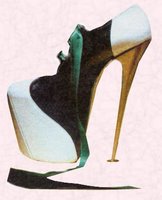
Clogs became quite trendy in the '70s, probably for their convenience; they are easy to slip on and off. Clogs, however, have been around for sometime, particularly in The Netherlands. "Klompen" (a pair of clogs in Dutch) have been a cultural mark in The Netherlands' for several centuries.7 This shoe was used primarily to do work, especially during the Industrial Revolution. Popular in northern France, England, and the low countries (i.e. Belguim, Luxemburg, and The Netherlands), the shoes were cheap, durable, and very strong since they were made from tough materials like alder, birch, sycamore, or breech. Shaped to fit the foot, clogs were often worn with thick socks or bare feet. With the latter, hay, straw, or bracken stuffed along the interior helped pad the rigidity of the wood.The upward turned toe in most traditional clogs make it easier to walk. Today in The Netherlands, klompen are made from plain wood with the beautifully carved, painted, or textured clogs saved for Sundays. A typical appearance of the clog in contemporary Netherlands is in the gardens as someone tends to the plants and flowers.
related story:
Shoe design and history

So the '30s had passed and toward the end of the 1960s, something re-emerged: those thick chunky platform shoes. This time round, however, the shoes took on a new dash of flavor. By 1975, platforms were so common and fashionable that, to be "hip," at least 2 inch soles and 5 inch heels w
 ere required.1 It was during these years that experimentation with fash
ere required.1 It was during these years that experimentation with fash ion, not only drugs and sex, broke all kinds of rules of the pretentious 50s. Men, as well as women, adorned platforms. Pop art emulated the platform shoe, and by 1971, it was considered the most exciting year in shoe design, not only for the population but for Pop artists. The colors and designs were raved as "psychedelic," for their swirls and colors.2 It was during the 1970s that the platform shoe experienced it's most playful and colorful look.
ion, not only drugs and sex, broke all kinds of rules of the pretentious 50s. Men, as well as women, adorned platforms. Pop art emulated the platform shoe, and by 1971, it was considered the most exciting year in shoe design, not only for the population but for Pop artists. The colors and designs were raved as "psychedelic," for their swirls and colors.2 It was during the 1970s that the platform shoe experienced it's most playful and colorful look.American platforms, 1970s

The 70
 s, as depicted in classic movies like Saturday Night Fever, was disco filled,
s, as depicted in classic movies like Saturday Night Fever, was disco filled,  drug warped and sleazy. I'm refraining from judging those aspects of the '70s, but if you take a standard person off the street and ask for his/her images of the '70s, most likely, one of the answers is platform shoes.Platforms were in discos, at work, in supermarkets, just everywhere. Originality was sought in decorating feet: suede; fruits; flowers; silver; rainbows; bright colors; clashing colors; stars; glitter; hand painted stars and moons on wooden shoes; shoes large enough goldfish could be kept in a detachable, clear sole; thigh high, lace up boots; KISS's monstrous performance shoes; and on and on.
drug warped and sleazy. I'm refraining from judging those aspects of the '70s, but if you take a standard person off the street and ask for his/her images of the '70s, most likely, one of the answers is platform shoes.Platforms were in discos, at work, in supermarkets, just everywhere. Originality was sought in decorating feet: suede; fruits; flowers; silver; rainbows; bright colors; clashing colors; stars; glitter; hand painted stars and moons on wooden shoes; shoes large enough goldfish could be kept in a detachable, clear sole; thigh high, lace up boots; KISS's monstrous performance shoes; and on and on.Medical Concerns

So what if these monumental 6 inch shoes were impractical and uncomfortable to walk in--they were fun! But fun could have consequences: "Yet at the outset of the decade platform shoes and boots (already daringly high) had risen to alarming levels, provoking fears from the medical profession
 that the spines of the fashionable would be irrevocably damaged" 4. "With platforms, your brain loses feedback from the foot, which is not touching the ground in a normal fashion. You lose touch with your sense of balance."--another medical outlook on platform shoes, as noted by Dr. Vandergren, M.D., an orthopedic surgeon at Shands Hospital.
that the spines of the fashionable would be irrevocably damaged" 4. "With platforms, your brain loses feedback from the foot, which is not touching the ground in a normal fashion. You lose touch with your sense of balance."--another medical outlook on platform shoes, as noted by Dr. Vandergren, M.D., an orthopedic surgeon at Shands Hospital.In my opinion, it takes a certain grace to master these statuesque shoes, only a talent reserved by few. Naturally, these fears and reservations did not stop the trend, perhaps only furthering the shoes' popularity amongst the young.
Elton John, 1970s

Gender Rules
As I mentioned earlier, platform shoes were not ascribed to one particular gender in the 1970s. It became quite common place to see young women in 3 inch soles, walking with a young man wearing matching 3 inchers. So it is the lack of gender rules that distinguished the '70s from the earlier eras.
Men would never dare to wear platforms in the 1600s or 1930s. Men in the '70s, however, tended to wear more of the boot type platforms, leaving the more feminine shoes for women. This is particularly noticeable on stage, where performers like Elton John (one of his performance shoes are shown to the right) and KISS donned outrageous outfits and platform shoes to entertain their audiences.
Of course, the same theory can be reversed. Women would never have dared to wear men's shoes before, and with gender issues exploding in the 60s and 70s, it becomes acceptable.
Clogs from the '70s

Clogs became quite trendy in the '70s, probably for their convenience; they are easy to slip on and off. Clogs, however, have been around for sometime, particularly in The Netherlands. "Klompen" (a pair of clogs in Dutch) have been a cultural mark in The Netherlands' for several centuries.7 This shoe was used primarily to do work, especially during the Industrial Revolution. Popular in northern France, England, and the low countries (i.e. Belguim, Luxemburg, and The Netherlands), the shoes were cheap, durable, and very strong since they were made from tough materials like alder, birch, sycamore, or breech. Shaped to fit the foot, clogs were often worn with thick socks or bare feet. With the latter, hay, straw, or bracken stuffed along the interior helped pad the rigidity of the wood.The upward turned toe in most traditional clogs make it easier to walk. Today in The Netherlands, klompen are made from plain wood with the beautifully carved, painted, or textured clogs saved for Sundays. A typical appearance of the clog in contemporary Netherlands is in the gardens as someone tends to the plants and flowers.
related story:
Shoe design and history


